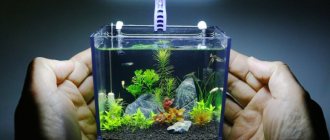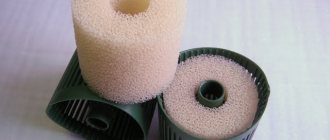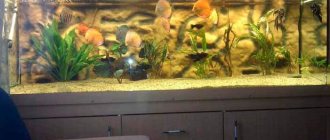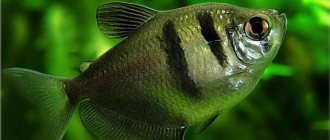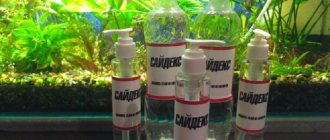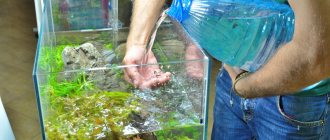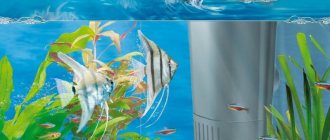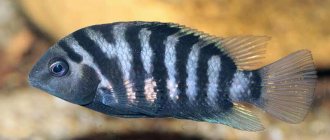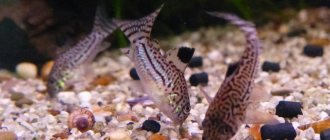If you are the owner of an aquarium, then sooner or later you will come to the question of how to choose an aquarium filter. It is also important to understand which filter is suitable for your artificial pond. In the article we will become familiar with the concepts of a filter, and also consider the best models of internal and external filtering devices.
- Filter 350KF
Cleanliness in the aquarium is quite possible without frequent water changes: the use of special aquarium filters will create optimal living conditions for every inhabitant of the home pond. To choose the right device, you need to determine the basic characteristics and parameters of the filter devices.
Features and benefits of the internal filter
Most experienced aquarists use these popular and inexpensive units: they provide not only effective cleaning and a variety of models, but also good efficiency. Models are designed for aquariums up to 500 liters. Due to their compact size, internal filters do not reduce the volume of the “home pond”. When installed in large-volume tanks, they can play the role of additional devices along with external filters.
The operating principle is based on the fact that the water flow created by the built-in pump is reflected from the walls of the aquarium, raising suspended particles. After which the debris is carefully sucked out by the filter.
The closed type (“glass”) model is quite popular: with limited productivity (no more than 200 liters of water), such filtration devices provide sufficient cleaning efficiency.
By enriching the water with oxygen, filter heads cleanse the tank of mechanical and biological particles, therefore they are considered an ideal technical solution for large aquariums.
A popular option when choosing an internal filter is a completely budget airlift that uses air lift. The advantages of the device are accessibility even for beginner aquarists, ease of operation, effective mechanical filtration and saturation of the water flow with an air mixture.
These models also have disadvantages: the low power of the air compressor. The filter device is optimal for installation in small tanks up to 100-150 liters.
Internal filters for aquariums are attractive due to their efficiency, ease of maintenance, compact size and the ability to aesthetically disguise the device.
What filter materials are used?
The sizes and shapes of the filter material can be different, and therefore attention should be paid to the substance of which it consists. The scope of its application will depend on the composition of the material. Let's take a look at the most popular options.
Table. Popular filter materials.
| Name of filler, photo | Brief description of the material |
| Calcium carbonate | Used in the form of coral sand, coral chips (crushed corals) or crushed limestone as a chemical to increase water hardness and increase or buffer the pH . |
| Zeolite | It is a naturally occurring ion exchange resin that neutralizes ammonia and is used primarily as a chemical filter material. It can also act mechanically and biologically. |
| Activated carbon | It is used as a means of removing certain medications (especially organic dyes, such as methylene blue ) and dissolved heavy metals from water. However, it does not remove the products of the nitrogen cycle - ammonia, nitrites and nitrates. |
| Sintered glass | Glass that has undergone a special treatment, resulting in it being extremely porous. This results in a very large surface area on which colonies of bacteria settle. |
| Ceramics | Many ceramic products, especially hollow tubes, can act as filter media for coarse filtration. They act as a mechanical and biological filter medium. |
| Peat | Typically used as a chemical medium to lower pH. May also act mechanically and biologically. Gives the water the color of tea. |
| Synthetic threads | Nylon yarn is often considered an old-fashioned solution these days, but it is still an inexpensive and highly effective filter material that allows for mechanical and biological filtration. |
| Gravel | Aquarium gravel of any type (not sand, which clogs too easily), properly rinsed before use, can be used for mechanical and biological filtration. It can also act as a chemically active filter medium. |
| Sponge | Cheap but very effective mechanical and biological filter material. Typically sold as cartridges included with certain filters. The sponge can be washed and reused many times. |
External filter for aquarium
Based on the name, you can understand that external filters are mounted on the outer wall of the tank. Most often, such devices are installed in large aquariums with a volume of at least 150 liters. A durable, sealed hose sucks up the water and delivers it to the outdoor filter. The water flow, having passed through the cleaning system, returns back through the second hose.
When choosing an external filter, the following advantages are the decisive factors:
- the reliability and performance of external filters allows for multi-stage water purification;
- designed for a long service life and do not require frequent filter replacement;
- work silently, without creating interference for the life of aquarium inhabitants;
- three-stage water purification: chemical compounds, biological components and mechanical particles are removed from the tank;
- do not reduce the volume of the aquarium.
DIY filtration
If it is not possible to purchase a branded purifier, then you can build a homemade external filter with your own hands. For production you will need:
- round plastic canister;
- flexible transparent hoses;
- three ordinary flower pots;
- an electric pump whose power is selected depending on the volume of the reservoir;
- synthetic winterizer, foam rubber;
- two fittings with a valve;
- ceramic or carbon filler.
How to make an aquarium filter with your own hands:
- A hole is made in the lower part of the round canister with a knife, and a fitting is inserted into the resulting hole. Using a knife or other sharp object, two holes are also made in the lid of the vessel: the first for the valve, the second for the electric pump, which is connected to the structure from the inside using a fitting. The joints are carefully and carefully fixed with silicone to avoid leaks and unforeseen situations in the future.
- Now we need to work on the filter cassettes - they are made from flower pots. The top half of each pot is cut off and small holes are made in the bottom. All three pots are filled with different filter materials: the first with padding polyester, the second with coal, and the third with foam rubber.
- The final stage is fixing the hoses to the outlet and inlet valves. Before you start attaching the pipes, you should carefully measure the length of the hoses so that they fit the home tank. The attachment points of the hoses are fixed with silicone, which must dry for at least 24 hours, otherwise it will fall off and water will seep into the joints.
- The homemade external filter is ready, all that remains is to check the structure for leaks. A plastic vessel, which acts as a body, is filled with liquid and left for 24 hours. If there are no leaks, the device is installed in the desired location and connected.
Filters in an aquarium perform important functions, without which comfortable living for fish and other residents is impossible. A purifier for artificial ponds is chosen based on the size of the aquarium, the power of the device and the type of filler, or you can make the device yourself, following simple recommendations. The main thing is not to forget to check the operation of the filter and take care of the device.
Classification of internal and external filters
Filtering devices are divided into three types according to the type of cleaning:
- The mechanical filtration option involves removing debris particles by passing through porous structures. The device is replaced and cleaned every 2 weeks.
- Biological treatment refers to the removal of foreign impurities and harmful chemicals from water. Ceramic fillers with a porous structure promote the formation of colonies of beneficial bacteria, which decompose ammonia compounds into safe components.
- Chemical filtration removes substances dissolved in water that are dangerous to fish. Such filters traditionally use activated carbon, which removes ammonia from water. Peat filters are used in fish aquariums that require the creation of soft acidic water.
The best choice is three-stage filters that perform deeper cleaning. Many models have an aesthetic appearance; their body looks like a stylish design element.
Aquarium filter: how to choose?
When deciding which aquarium filter is best to choose, it is worth considering the amount of energy consumed by the devices. You should start from the optimal values specifically for your conditions: for small aquariums a filter with a power of no more than 10 W is suitable, for impressive tank volumes it is better to choose a device with a power of up to 16 W.
Depending on the volume, aquarium owners choose internal and external filters based on their performance. A rational purchase would be a filter device with a flow rate of liquid passing through the system that is 3 times the volume of the aquarium. With a tank capacity of 200 liters, it is optimal to choose a filter with a capacity of at least 600 l/h.
Rating of internal filter models for aquariums
In addition to models for external installation, there are no less popular internal filters from our production.
Filter 350KF
Suitable for aquarium tanks up to 50 liters.
Pros:
- is able to work in tandem with other types of water purification devices;
- The pipe provides additional aeration of the liquid, so you can do without the cost of additional equipment.
Among the disadvantages, users highlight:
- low productivity at 280 liters per hour;
- low power.
Aquarium filter 700FC
The main advantage of this filter model is the presence of biochemical and chemical cleaning, which copes with the removal of any contaminants and the ability to install at a low water level (5cm)
Minuses:
- low power is designed for small volume aquariums - up to 30 liters.
Filter 04213 (airlift bottom)
When it comes to choosing an internal filter for a round aquarium, buyers pay attention to this model first.
Pros:
- Compactness;
- good cleaning at a low price.
The downside is the thin plastic, which can easily break if handled carelessly.
Airlift filter 7321F
If the question arises, which aquarium filter is best to choose among budget models, this is an excellent solution.
Advantages of this model:
- contains a large volume of filter material (a double sponge is used);
- ideal for use in aquariums with fry and shrimp.
The disadvantage of the device is that it provides mainly mechanical water purification.
Conclusion
- If you want to purchase a powerful and efficient external aquarium filter, then pay attention to the model 3313HF.
- Look for a durable and versatile device - the 608 aquarium filter model.
- Quiet and easy to use, the 1408 filter is suitable for marine and freshwater tanks.
- Filter model 2218KF is highly efficient and provides multi-stage cleaning.
- For 800 liter aquariums, the 3328UVF filter is suitable.
- The 350KF internal filter can be combined with other devices for purifying water in the aquarium.
- The 700FC filter provides biochemical and chemical filtration.
- Filter 04213 is a budget compact filter model.
- Filter 7321F is suitable for aquariums with shrimp and small fish
Purpose
Residues of food, excrement from the aquarium's inhabitants, and decomposing algae increase the amount of organic matter in the water to critical levels. Some types of fish cannot tolerate even the slightest pollution of the water space and die. Snails, which also know how to utilize bioproducts, do not fully cope with the task.
In oceans, seas, lakes and rivers, purification occurs naturally. This process has been perfected by nature over millions of years. At home, certain types of algae and frequent changes of water help create a healthy microclimate. But the surest way is to use filters to purify water. The designs of these devices are similar to natural ones and are capable of purifying water from waste products of its inhabitants.
